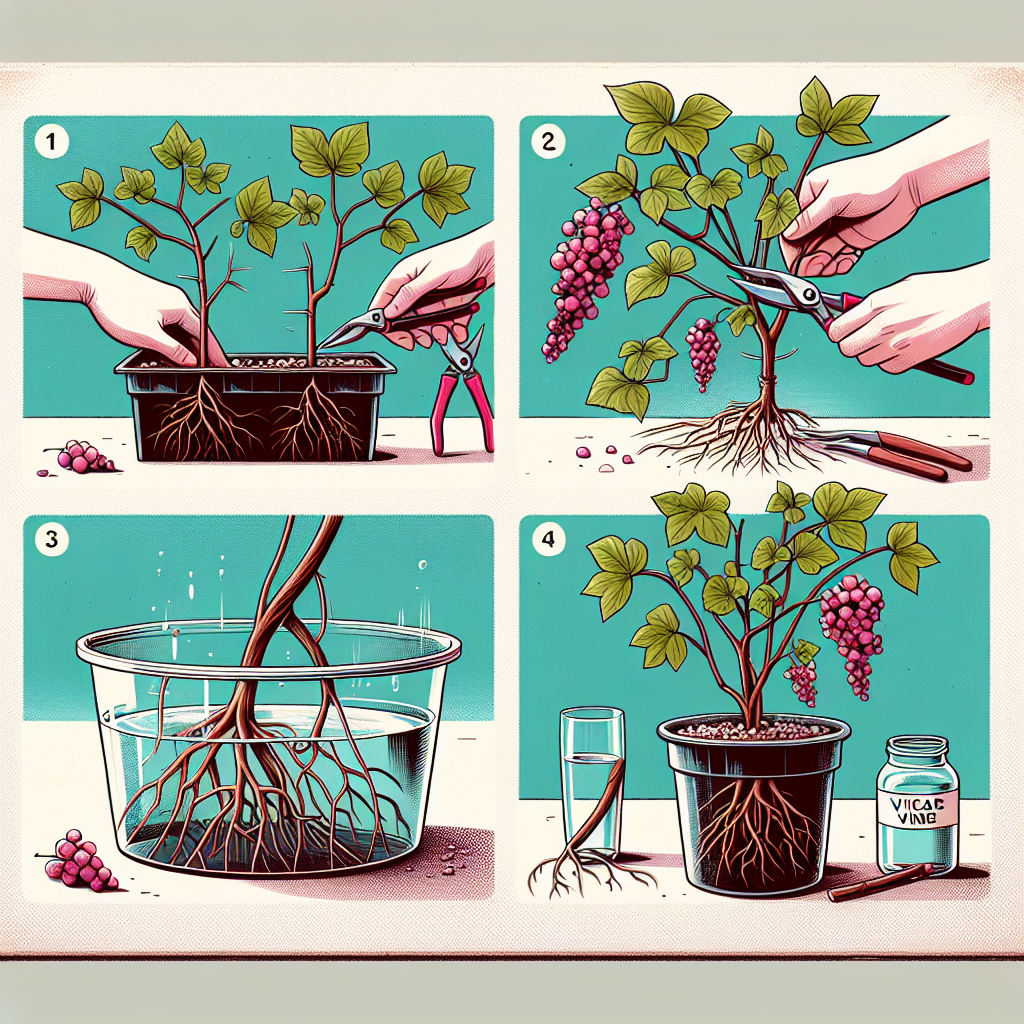
How to root a muscadine vine
How to Successfully Root a Muscadine Vine
Muscadine vines (Vitis rotundifolia) are native to the Southeastern United States and are beloved for their sweet, juicy grapes. Not only are they perfect for eating fresh, but they also make excellent wine and preserves. If you're passionate about gardening and want to expand your vineyard, learning how to root a muscadine vine can be a rewarding endeavor. This guide will walk you through the process step-by-step, ensuring that you have the best chance for success.
Understanding Muscadine Vines
Before diving into the rooting process, it's essential to understand what muscadine vines are and their specific requirements. Muscadines are robust plants that thrive in warm, humid conditions and prefer well-drained, sandy loam soils. They are unique amongst grapes, with a high tolerance for heat and drought, making them a favorite among Southern gardeners.
- Varieties: There are many varieties of muscadine, each with distinct flavors and sizes. Some popular varieties include 'Carlos', 'Noble', and 'Fry.'
- Fruit Characteristics: Muscadines often have thicker skins and unique flavors compared to traditional grapes. They can be bronze, black, or purple in color.
- Growing Conditions: These vines prefer full sun and require a strong trellis system for support.
Gathering Materials for Rooting
To start, you’ll need specific materials for rooting your muscadine vine:
- Healthy Cuttings: Choose cuttings from a healthy muscadine vine, ideally from a robust variety known to thrive in your climate.
- Pruning Shears: A clean pair of pruning shears will ensure clean cuts, reducing the risk of disease.
- Rooting Hormone: A commercial rooting hormone can enhance success rates by encouraging quicker root development.
- Potting Mix: Use a well-draining potting mix suitable for cuttings.
- Pots or Containers: Small pots or propagation trays will work well, ideally with drainage holes.
- Plastic Bags or Cling Film: These will help create a greenhouse-like environment to maintain humidity.
Choosing the Right Time for Rooting
The best time to root muscadine vine cuttings is during late spring or early summer when the vines are actively growing. This period generally yields the highest success rates as the plants are in their prime.
Steps to Root a Muscadine Vine
Now that you have your materials, you can follow these detailed steps on how to root a muscadine vine successfully:
- Select Cuttings: Cut a healthy section of the vine, about 6-8 inches long. Ensure each cutting has at least two nodes (the bulges where leaves emerge).
- Prepare Cuttings: Remove any leaves from the lower half of the cuttings to lessen moisture loss. You can leave one or two leaves at the top to aid photosynthesis.
- Apply Rooting Hormone: Dip the cut end of each cutting into rooting hormone, shaking off any excess. This helps stimulate root growth.
- Plant Cuttings: Insert the cuttings into your prepared potting mix, ensuring at least two nodes are buried in the soil.
- Water Thoroughly: Water the cuttings well and let the excess drain away. Always ensure the potting mix stays moist but not soggy.
- Create Humidity: Cover the pots with plastic bags or cling film to maintain high humidity. This step is crucial, especially if your environment is on the dry side.
- Provide Indirect Light: Place your setup in a location with bright, indirect sunlight, which will help your cuttings to thrive without drying out.
- Monitor and Wait: After about 4-6 weeks, gently tug on the cuttings. If you feel resistance, roots are likely forming. Continue providing care until the cuttings are well-rooted.
Aftercare for Your Rooted Muscadine Vines
Once your muscadine vines are rooted, proper aftercare is essential for healthy growth:
- Transplanting: When the roots fill the pot, typically after 2-3 months, you can gently transplant your vine into a larger pot or your garden.
- Fertilization: Use a balanced fertilizer to support growth, following the manufacturer’s instructions. Fertilizing every 6-8 weeks during the growing season is usually best.
- Watering: Maintain consistent moisture in the soil but avoid waterlogging. It’s essential to let the top inch of soil dry before watering again.
- Sun Exposure: As the vines grow, gradually acclimate them to full sunlight, especially if they were started indoors.
Common Problems and Solutions
While rooting muscadine vines can be a straightforward process, issues may still arise. Here are some common problems and their solutions:
| Problem | Symptoms | Solutions |
|---|---|---|
| Fungal Issues | Yellowing leaves, mold on soil | Ensure good air circulation, use a fungicide, avoid overwatering |
| Pests | Visible insects, damaged leaves | Use insecticidal soap or neem oil for treatment |
| Weak Growth | Stunted growth, wilting | Check for diseases, ensure proper watering and fertilization |
Conclusion
Rooting muscadine vines might initially seem challenging, but with the right knowledge and careful attention, it can be an enjoyable and fruitful experience. By following these steps and tips on how to root a muscadine vine, you are well on your way to expanding your collection of these delightful plants. With patience and care, you’ll soon be able to enjoy homegrown muscadine grapes!
```By Guest, Published on August 6th, 2024